Table of Contents Show
After three full years of bone-crunching, spine-tingling stories of fear, Marvel’s greatest monster character is finally immortal no more in Hulk #1 (2021) — and Donny Cates (writer), Ryan Ottley (penciler & inker), Frank Martin (colorist), VC’s Cory Petit (letterer), and Wilson Moss (editor) take on the unenviable task of following up the Hulk’s horror genre previous run, critical darling Immortal Hulk (2018-2021), by returning the book to its psychological drama-infused, action-packed roots while establishing an intriguing new status quo for the Hulk.
Starship Hulk
Hulk #1 begins some length of time after the earth-shattering battle of the final issue of Immortal Hulk, where we find that after the events of the series the Hulk’s alter-ego, brilliant scientist Bruce Banner, has sealed the Hulk away in a corner of his mind via a combination of science and sorcery, blaming him for the fallout of that final battle. Having gained control of the Hulk’s body, Banner outfitted it with power armor and operates it from a technological control panel within his mindscape, calling it Starship Hulk and forcing the original Hulk to fight endless illusory copies of his old foes in a separate portion of the mindscape to generate enough “rage energy” to power his creation, effectively using the Green Goliath as a battery for it.
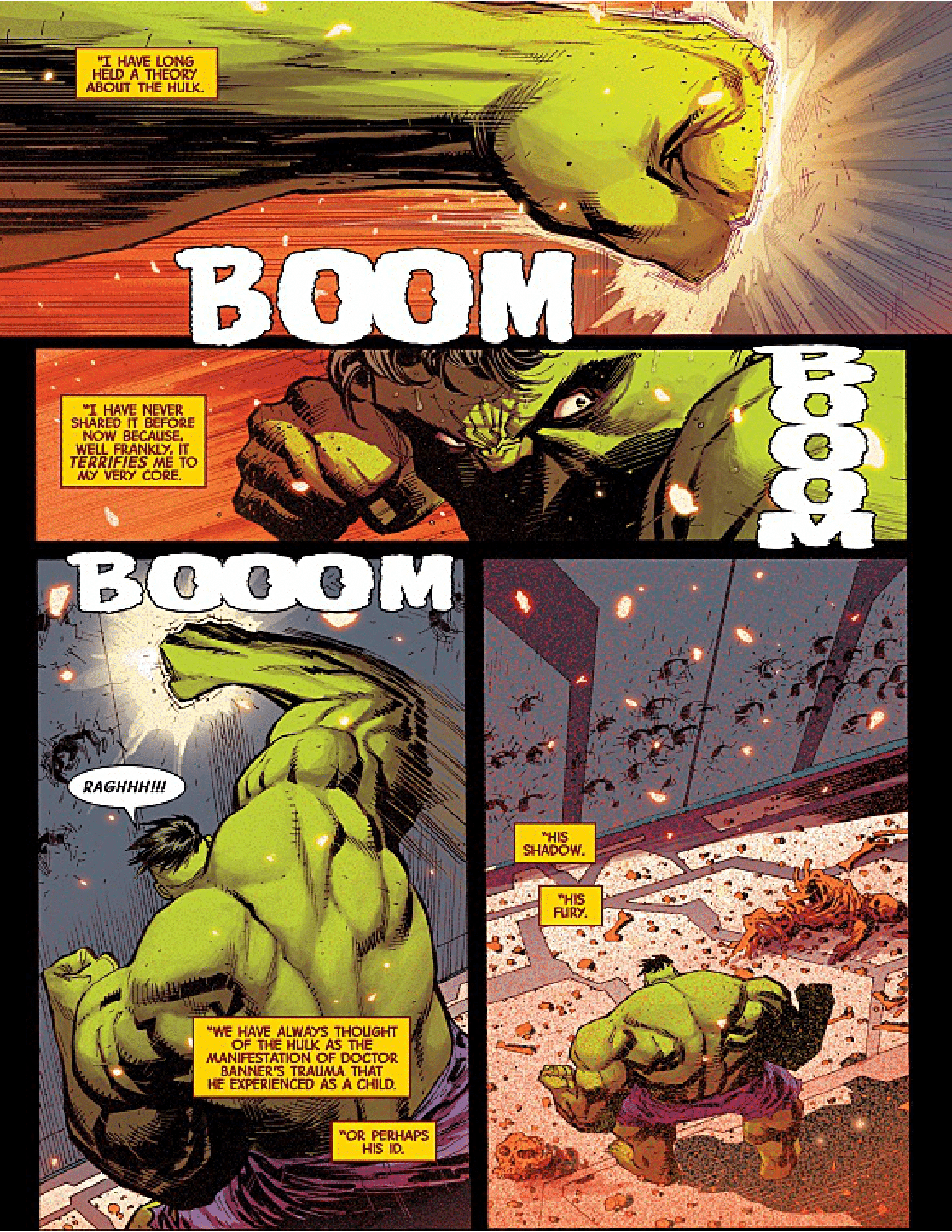
His first target is Project A.R.K., a dimensional transporter built by Iron Man with which he intends to scour the multiverse for some yet-unknown purpose. After rampaging through Iron Man’s armory and defeating the Armored Avenger himself, whose Hulkbuster drones are not nearly enough to stop this new Starship Hulk, Banner activates the device and leaps through dimensions, leaving a warning behind to any who would oppose him — he is no longer controlled by his rage, but fueled by it.
“What If The HULK Exists… To Protect Us From Banner?”
Rather than attempting to one-up Immortal Hulk‘s highly lauded horror, Donny Cates chose to return the character to the action comic star that he was for so many years while retaining an air of unsettling creepiness and having a link to the previous run in the form of Bruce Banner’s current state of mind — after three years of real-world publishing time starring in a horror book, the man appears to have gone a bit insane. This wouldn’t come as a surprise to those who follow Cates’s work — the author has made his name writing action books, so the classic incarnation of his character is far more conductive to his writing style. Though some might be put off by Hulk #1‘s action-focused approach and even call it “style over substance,” fans of the classic Incredible Hulk comics of the 1980s and 1990s will definitely find it familiar and representative of what they love about the book.
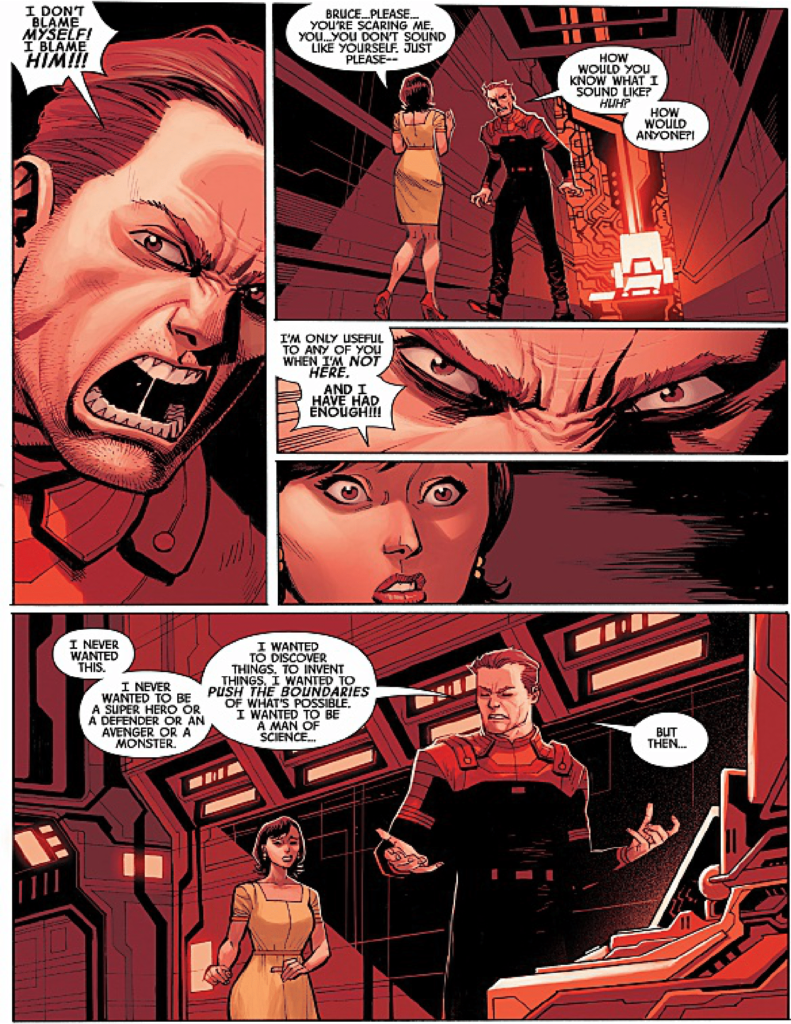
However, while the style of Hulk #1 mirrors Hulk comics of the past, the Starship Hulk status quo is a purely novel innovation. While there have been versions of the Hulk driven by Banner’s intelligence before, none of them have come to be quite like this. Having Banner forcibly take over establishes the dichotomy between this version of the scientist and previous ones — this certainly isn’t the kindly researcher who dove into the way of a gamma bomb to save an innocent young teenager. Cates definitely isn’t simply replaying the book’s greatest hits, but using their thematic significance to chart a new course for it.
Cates also puts a twist on the classic Incredible Hulk formula with what appears to be the central idea of at least his opening story (as it is the cover blurb as well as the opening words of the book itself) — what if it isn’t the Hulk that the world should fear, but Bruce Banner? Making Banner the one on a rampage and the Hulk powerless to stop him is a great subversion of what has been the essential premise of the Incredible Hulk series from its inception and serves to instantly hook both casual, new readers who would know little else but the original premise and longtime fans who have followed the book through multiple runs.
Classic Art For A Classic Book
Ryan Ottley’s pencils lie very much in the classic Marvel style — not too cartoony yet not completely realistic either, they evoke the classic Incredible Hulk books Hulk #1 is trying to emulate and subvert extremely well. His wide panels and proliferation of copious two-page spreads call to mind the “widescreen comics” movement of the early 2000s while the dynamic fight scene between Starship Hulk and Iron Man is a worthy addition to the tapestry of iconic battles between the two Marvel superheroes. Though his Starship Hulk design with its arguably overdesigned armor might have drawn some criticism upon its reveal, it works in the context of the story — this is a Hulk that’s being controlled, his mind taken over by Banner. However, Ottley’s greatest achievement might be his depiction of Bruce Banner — the maniacal facial expressions he gives the scientist while keeping him recognizable sell more than anything the idea that he has gone insane.
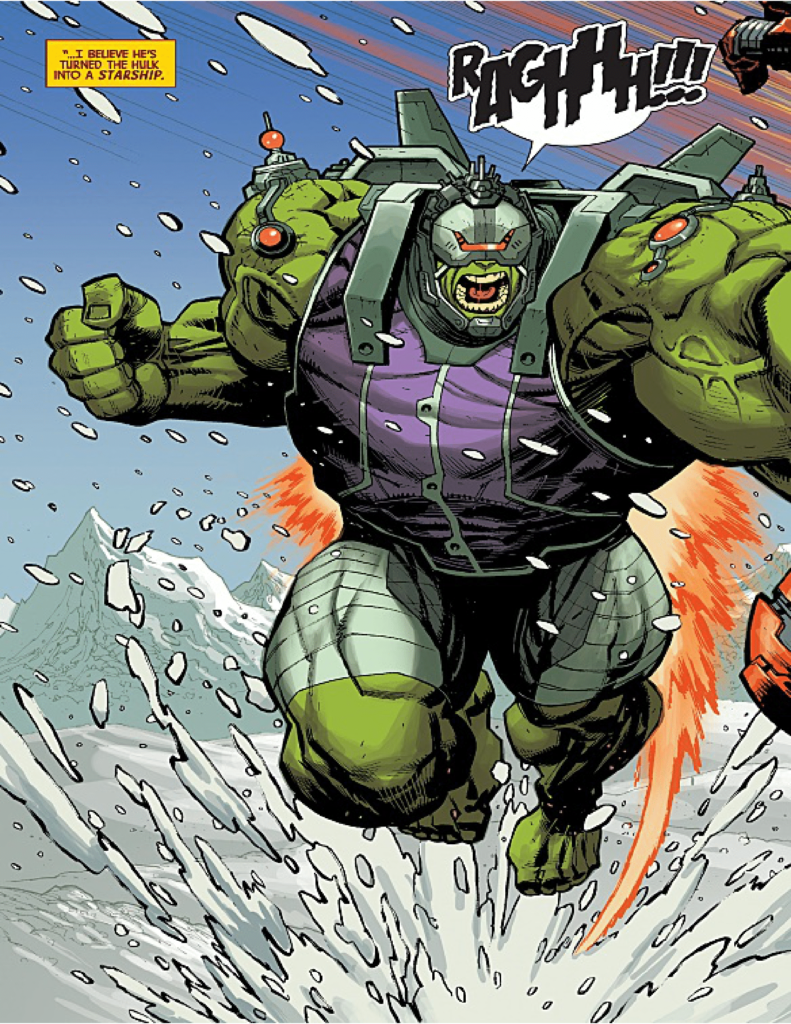
Frank Martin’s colors greatly establish the world of the book. From the shades of red used for Banner’s portion of the mindscape to the surrealistic perpetual sunset where the original Hulk wages war against his illusory enemies to the bright colors of the Avengers in their headquarters to the muted shadows in key panels of the issue’s big superhero battle, each scene is given a distinct color sensibility that lends it a visual as well as thematic significance.
A Book For Those Who Just Want To See The Hulk Fight
For all its strengths, Hulk #1 is a comic book that simply won’t be conducive to the tastes of every comics reader — this is a straight-up superhero action book and never pretends to be anything but that. The story, while engaging and well-written, clearly exists to string together the big action scenes and blockbuster-style set-pieces — an approach used often by Cates in his previous work.
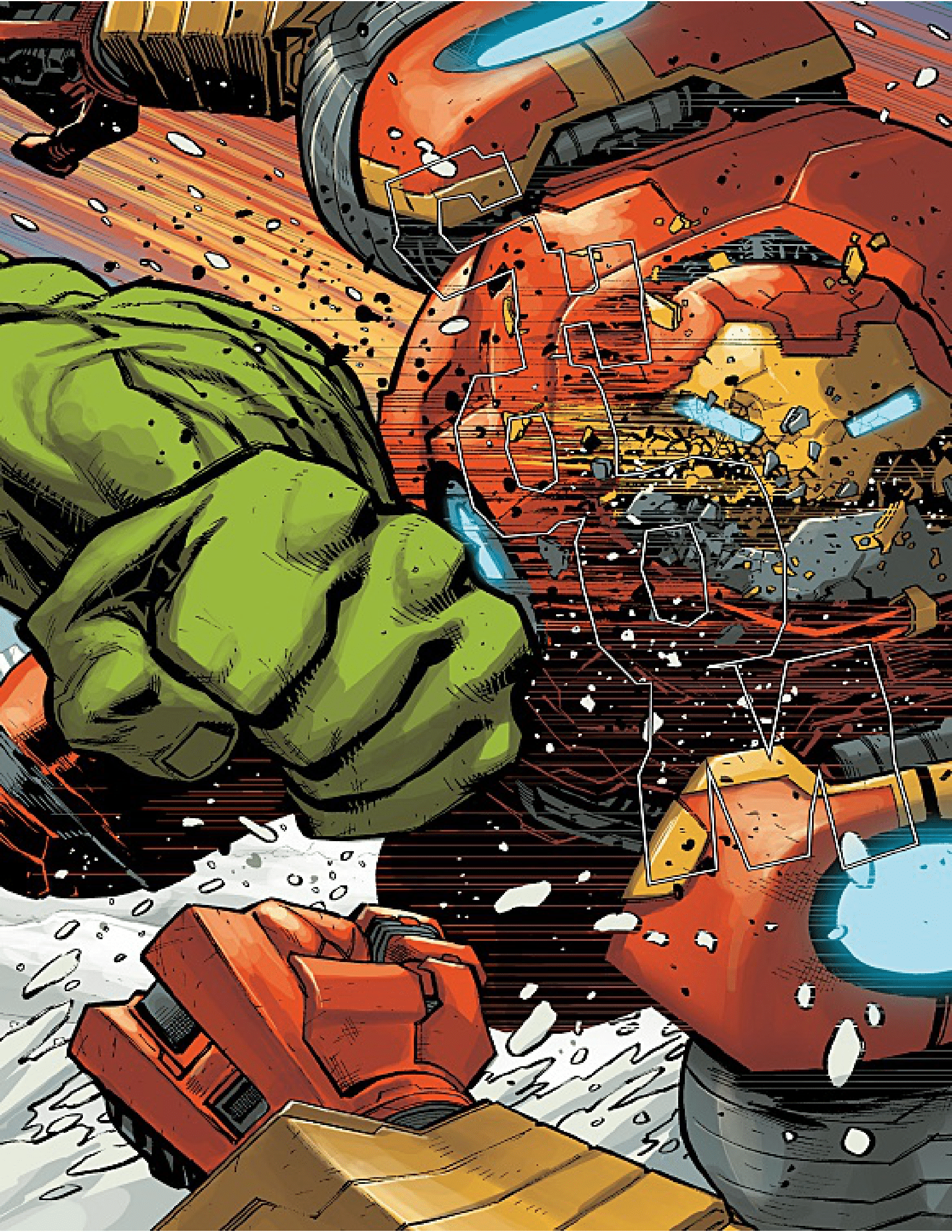
If someone reads this comic expecting the deeply-wrought social commentary of Immortal Hulk, they’ll walk away disappointed, as will those hoping to see the classic Hulk character in all his childlike naivete, but fans of the action of classic Incredible Hulk comics and this comic’s creative team’s previous action-focused Marvel Comics books will find a lot to enjoy in Hulk #1.
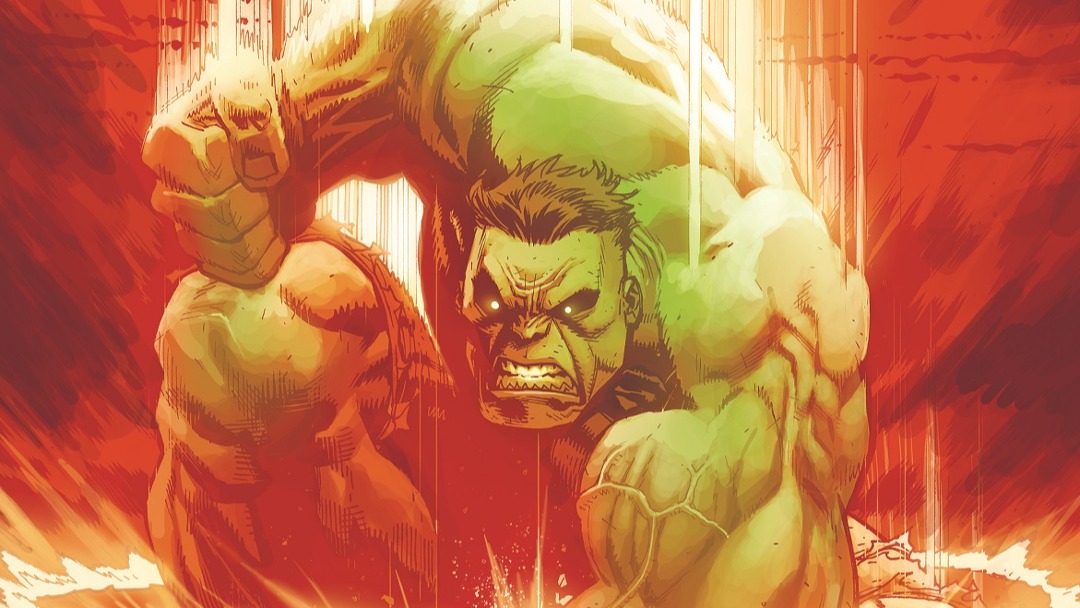
Lovely! I’m excited to see where this series goes next with the unhinged Banner. It’s interesting to see the parallels between The Hulk and Banner and their equal capacity for destruction. (Banner maybe even more so!)